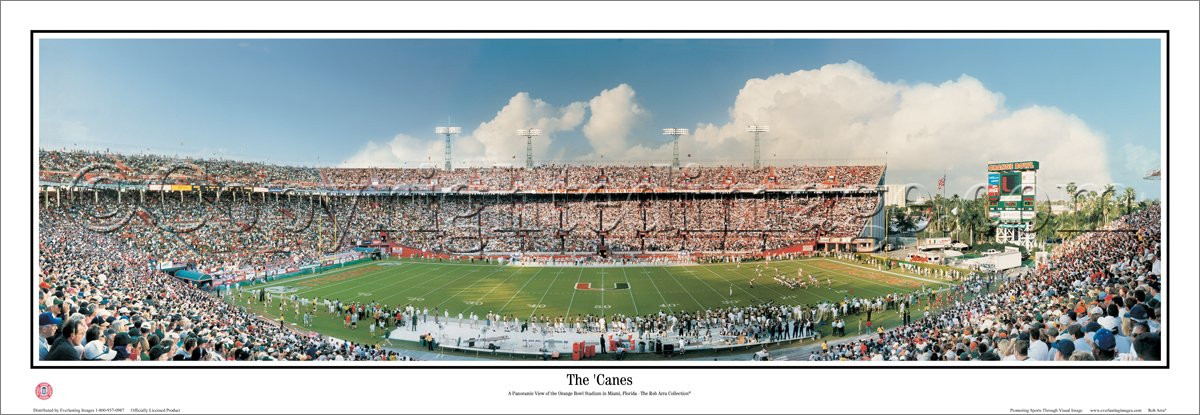
The Orange Bowl was demolished in 2008 and is now the site of Marlins Park, home of the Miami Marlins (MLB).

It was built with a seating capacity 74,476.

It was the home of the Miami Hurricanes until 2008 when they moved to Sun Life Stadium (now known as Hard Rock Stadium). The historic Orange Bowl stadium opened December 10th 1937 for the Miami Hurricanes football team. It was the home to many memorable football games including five Super Bowl’s and eleven National Championship football games. During the summer of 2008, as the Orange Bowl was demolished, hopes rose that a new stadium would be built in that plot of land near downtown Miami. The stadium was open on one end where the score/video board is located. Two levels of seats were in a horseshoe around the playing field. Renovations in 1996 to accommodate Olympic soccer again reduced the capacity to 72,319. In 1994, construction designed to improve handicap seating further reduced the capacity. Expansion of the VIP seating at the Orange Bowl and the addition of contour seats in the early 1990s reduced the capacity to 74,712. After the 1986 season they moved into Pro Player Stadium. By the 1980s the Dolphins decided they wanted a stadium of their own. Pro Player Stadium (1999) Dolphin Stadium (2007) Sun Life Stadium (2010) Hard Rock Stadium (2020) With Miami home to nearly 19 percent of all Super Bowls to date, it’s only natural. The east end zone seats were removed in 1977, reducing the capacity to 75,500. The NFL’s Miami Dolphins played their first game at the stadium on September 2, 1966. In 1959, Burdine Stadium was renamed the Orange Bowl. Between 19 roughly 16,000 seats were installed completing the upper deck of the stadium. The Orange Bowl Stadium Awkward Sports History Awkward Sports History 462 subscribers Subscribe 3. In 1947, an additional 25,000 seats were added raising the capacity to 60,000. Stadium - now called Pro Player Stadium - or lose its place in the Bowl. In 1944, the stadium was enclosed when over 10,000 seats were added to the endzones bringing the capacity to 35,030. Otherwise, on the day the Orange Bowl was to be played, the Orange Bowl was. 5 Southern California at Pro Player Stadium. Like many stadiums throughout the country, the Hurricanes were a huge draw and therefore more seats were needed. Bob Graham plans to work the sidelines in Thursdays Orange Bowl as a referee. The Miami Hurricanes played their inaugural first game at the stadium on Decemagainst Georgia. It originally known as Burdine Stadium and had a seating capacity of 23,330. The stadium was completed one year later at a cost of $340,000. In July 1936, the Hurricanes and the City of Miami reached an agreement to build a new stadium for the team. In the early 1930s, a new stadium was needed for the University of Miami’s football program.

NFL footage © NFL Productions LLC.Home of the University of Miami Hurricanes for more than 60 years, the Orange Bowl was the site of many historical football moments. All other NFL-related trademarks are trademarks of the National Football League. Buffalo Bills Stefon Diggs throws shade at sunny Dolphins stadium at Pro Bowl Games. NFL and the NFL shield design are registered trademarks of the National Football League.The team names, logos and uniform designs are registered trademarks of the teams indicated. This game has been moved back to the Orange Bowl (from Pro Player Stadium) to avoid possible conflicts with NFL playoff games.


 0 kommentar(er)
0 kommentar(er)
